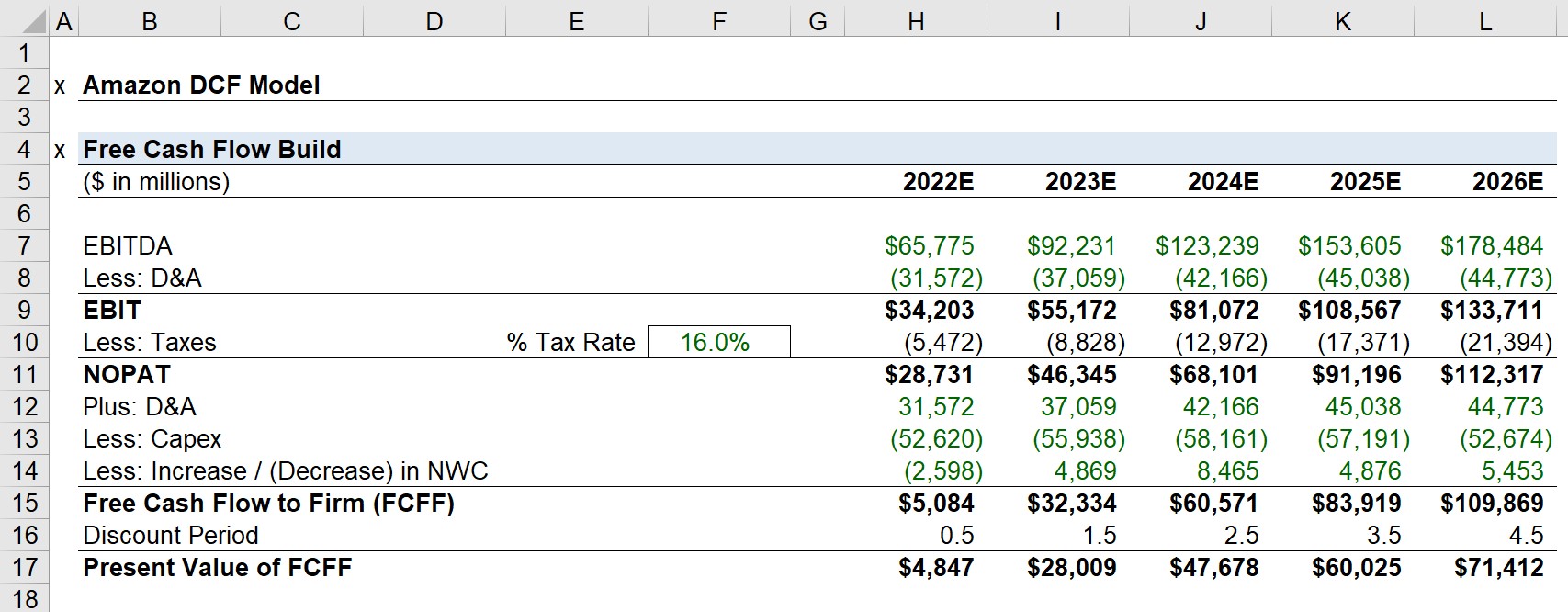

Finance
What Are The Types Of Capital Structure
Published: December 25, 2023
Discover the various types of capital structure in finance and understand how it impacts a company's financial position. Explore debt, equity, and hybrid options.
(Many of the links in this article redirect to a specific reviewed product. Your purchase of these products through affiliate links helps to generate commission for LiveWell, at no extra cost. Learn more)
Table of Contents
Equity Capital
Equity capital refers to the funds raised by a company through the sale of shares in the business. It represents the ownership interest in the company and provides the investors with a claim on the company’s assets and profits.
Equity capital can be raised through various sources, such as initial public offerings (IPOs), private equity investments, or angel investors. When a company goes public and offers shares to the general public, it is known as an IPO. Private equity involves investments made by institutional investors or high-net-worth individuals in privately-held companies.
Equity capital offers several benefits to companies. It does not need to be repaid like debt capital, which reduces the financial pressure on the company. Additionally, equity shareholders have voting rights and participate in the decision-making process of the company. This infusion of capital can be used by the company for expansion, research and development, or other strategic initiatives.
However, there are some drawbacks to using equity capital. When shares are sold to investors, the company dilutes its ownership, which means existing shareholders may have less control. Moreover, sharing profits with equity shareholders can reduce the overall profitability of the company.
Equity capital is a vital component of a company’s capital structure. It provides long-term funding and helps establish the company’s financial stability. By utilizing equity capital, companies can fuel their growth and achieve their strategic objectives.
Debt Capital
Debt capital is a form of financing that companies obtain by borrowing money from lenders. It represents funds that need to be repaid over a specified period, typically with interest. Debt capital can be sourced from various institutions such as banks, financial institutions, or through the issuance of bonds.
Companies utilize debt capital to meet their short-term and long-term funding needs. Short-term debt, also known as working capital loans, is used to fund day-to-day operations, manage inventory, and cover any temporary cash flow gaps. Long-term debt, on the other hand, is used for larger investments such as purchasing property, equipment, or acquiring another company.
One of the main advantages of debt capital is that it allows companies to maintain ownership and control. Unlike equity capital, taking on debt does not dilute ownership or involve giving up a share of the company. Additionally, interest payments on debt are generally tax-deductible, reducing the overall tax liability of the company.
However, there are risks associated with debt capital. Companies have an obligation to repay the principal amount borrowed along with interest, which creates a financial burden. If a company is unable to make these payments, it can lead to default and damage the company’s creditworthiness. Furthermore, taking on too much debt can limit a company’s financial flexibility and hinder its ability to invest in growth opportunities.
Companies need to carefully manage their debt capital to maintain a healthy balance between debt and equity. Balancing the use of both forms of capital allows companies to optimize their capital structure and reduce the overall cost of capital. It is important for companies to assess their borrowing needs, evaluate risk, and determine the appropriate mix of debt and equity financing to support their business goals.
Hybrid Capital
Hybrid capital, also known as mezzanine financing, is a form of capital that combines both debt and equity features. It lies between traditional debt and equity capital, offering companies a flexible financing option to meet their specific needs.
Hybrid capital is typically used when companies require additional funding beyond the capacity of traditional debt or equity financing. It is often sought after during major expansion projects, mergers and acquisitions, or to strengthen the company’s balance sheet.
One of the key characteristics of hybrid capital is that it has both debt-like and equity-like features. It carries characteristics of debt, as it involves a fixed repayment schedule and the payment of interest. However, it also has equity-like features, such as conversion rights, which allow the investors to convert their investment into equity shares in the company.
By combining debt and equity features, hybrid capital offers a unique set of benefits to both the company and the investors. For companies, it provides an alternative financing option that does not dilute ownership or control. It offers more flexibility in terms of repayment compared to traditional debt financing and is often structured with a longer-term maturity.
From the investors’ perspective, hybrid capital provides the potential for higher returns compared to traditional debt investments. The conversion feature allows investors to participate in the upside potential of the company if it performs well. However, it also carries higher risks, as the investors’ returns depend on the company’s success and ability to generate sufficient cash flow to meet its obligations.
Hybrid capital is typically provided by specialized investors who have a high-risk tolerance and are willing to invest in growth-oriented companies. They play a crucial role in bridging the financing gap between debt and equity capital.
It is important for companies to carefully evaluate the terms and conditions of hybrid capital, as they vary depending on the specific structure of the investment. Consulting with financial advisors and conducting thorough due diligence is essential to ensure that hybrid capital aligns with the company’s financial goals and capital structure requirements.
Retained Earnings
Retained earnings refer to a portion of a company’s profits that is reinvested back into the business instead of being distributed to shareholders as dividends. It represents the cumulative earnings that the company has retained since its inception.
When a company generates profits, it has the option to distribute those profits to shareholders or retain them for future use. Retained earnings are a form of internal financing that can be used to fund various activities, such as research and development, acquisitions, debt repayment, or working capital needs.
Retained earnings play a significant role in a company’s capital structure as they contribute to its equity base. They reflect the accumulated wealth and growth of the company over time. Companies with substantial retained earnings are often viewed as financially stable and capable of pursuing growth opportunities.
There are several benefits of using retained earnings as a source of capital. First, it does not incur any interest expense or repayment obligations like debt financing. This can improve the company’s profitability and reduce its financial risk. Second, retaining earnings allows the company to maintain full ownership and control over its assets and decision-making process.
However, there are also considerations to keep in mind when utilizing retained earnings. It is important for companies to strike a balance between reinvesting earnings into the business and providing returns to shareholders. If a company consistently retains too much of its earnings without distributing dividends, it may negatively impact investor confidence or result in a lower stock valuation.
Furthermore, the availability of retained earnings depends on the company’s profitability. In periods of financial difficulty, when profits are low or negative, companies may need to rely on other sources of capital to meet their funding requirements.
Overall, retained earnings are an important component of a company’s capital structure. They represent the company’s ability to generate profits and reinvest in its growth and future success. By effectively managing retained earnings, companies can strengthen their financial position and support their long-term objectives.
Preference Share Capital
Preference share capital, also known as preferred stock, is a type of equity capital that gives preference shareholders certain rights and privileges over common shareholders. It represents a hybrid form of financing that combines features of both equity and debt.
Preference shares are typically issued by companies as a way to raise capital without diluting the ownership or control of existing shareholders. They are called “preference” shares because they have a preference over common shares in terms of dividend payments and capital distribution in the event of liquidation.
Preference shareholders have a fixed dividend rate, which is paid out before any dividends can be distributed to common shareholders. This fixed dividend rate provides a steady and predictable income stream to preference shareholders, similar to interest payments on debt. However, preference shareholders do not typically have voting rights or the same level of participation in the decision-making process as common shareholders.
In the event of liquidation, preference shareholders have priority over common shareholders in receiving the company’s assets. This means that if the company faces financial distress or needs to wind up its operations, preference shareholders will be paid their capital investment before common shareholders receive any proceeds.
Preference share capital provides several advantages to both the company and investors. For companies, issuing preference shares can help diversify their funding sources and reduce reliance on debt financing. It also allows them to attract investors who prefer a more predictable income stream and are willing to forgo voting rights in exchange for higher dividends.
For investors, preference shares offer a relatively stable investment with a fixed dividend rate. They provide a balance between the risk associated with equity investments and the security of debt investments. Preference shareholders also have a preference over common shareholders in receiving dividends and assets in the event of liquidation.
However, there are also considerations and limitations to be aware of with preference share capital. The fixed dividend rate on preference shares can limit the company’s ability to reinvest profits into the business or reduce the flexibility of cash flow allocation. Furthermore, preference shares may not appreciate in value as much as common shares if the company’s stock price increases.
Overall, preference share capital is a valuable tool that companies can use to raise funds without diluting ownership or control. It offers investors a unique investment opportunity with fixed dividends and priority in receiving assets. By understanding the characteristics and implications of preference share capital, companies and investors can make informed decisions that align with their financial goals.
Common Equity Share Capital
Common equity share capital refers to the shares issued by a company that represent ownership interests in the business. It is the most common form of equity capital and provides shareholders with voting rights and a share in the company’s profits.
When a company issues common shares, investors purchase these shares and become owners of the company. As owners, shareholders have the right to vote on certain matters, such as the election of the board of directors and major company decisions. They also have the potential to receive dividends from the company’s profits.
Common equity share capital offers several benefits to both the company and the shareholders. For the company, issuing common shares is a way to raise capital without incurring debt or repayment obligations. It provides long-term funding that can be used for various purposes, such as expanding operations, investing in research and development, or acquiring other businesses.
For shareholders, common equity shares provide the potential for capital appreciation and participation in the company’s success. If the company performs well and its stock price increases, shareholders can benefit from the value of their shares. Additionally, they may receive dividends if the company chooses to distribute a portion of its profits to shareholders.
However, there are risks associated with common equity share capital. Shareholders bear the risk of potential losses if the company performs poorly or faces financial difficulties. Unlike debt financing, there is no fixed repayment schedule for common equity shares, and shareholders may not receive dividends if the company does not generate sufficient profits. Shareholders also have a diluted ownership interest if the company issues additional shares in the future.
Common equity share capital is an important component of a company’s capital structure. It represents the collective ownership and participation of shareholders in the company’s activities and financial success. By issuing common shares, companies can raise capital and attract investors who believe in the company’s growth potential.
It’s important for companies to strike a balance between issuing common equity shares and maintaining adequate control and ownership. Careful consideration should be given to the impact on existing shareholders, potential dilution, and the long-term financial goals of the company.
Long-Term Debt
Long-term debt is a form of financing that involves borrowing funds from lenders with a repayment period of more than one year. It is a common source of capital for companies to finance large investments or meet long-term financial needs.
Companies often utilize long-term debt to fund capital expenditures, such as the purchase of property, equipment, or infrastructure. Additionally, it can be used for business expansions, acquisitions, or refinancing existing debt obligations.
Long-term debt can be obtained from various sources, including banks, financial institutions, bond markets, or private lenders. The terms and conditions of long-term debt are typically outlined in a loan agreement and include the principal amount, interest rate, repayment schedule, and any collateral or guarantees.
One of the main advantages of long-term debt is that it provides companies with a stable and predictable source of funding. It allows companies to spread out the repayment of the borrowed funds over an extended period, reducing the financial strain on their cash flow.
Long-term debt also offers tax benefits. The interest expense on long-term debt is often tax-deductible, reducing the overall tax liability of the company. This can result in significant cost savings, especially for companies with high levels of debt.
However, there are several considerations and risks associated with long-term debt. Companies need to carefully assess their ability to generate sufficient cash flow to meet the interest and principal payments of the debt. Failure to comply with the terms of the loan agreement can lead to default and negatively impact the company’s credit rating.
Additionally, taking on long-term debt increases the company’s leverage and financial risk. It can impact the company’s ability to take on additional debt or pursue other financing options in the future. Lenders may also impose certain restrictions or covenants on the company, such as maintaining a certain debt-to-equity ratio or meeting specific financial targets.
Overall, long-term debt is a vital component of a company’s capital structure. It provides companies with the necessary funding to invest in growth opportunities, expand operations, or support strategic initiatives. Companies must carefully evaluate their borrowing needs, assess the associated risks, and develop a sound repayment plan to ensure the long-term sustainability of their debt obligations.
Short-Term Debt
Short-term debt refers to borrowed funds that are expected to be repaid within a year or less. It is a common form of financing used by companies to manage their working capital needs and address short-term financial obligations.
Companies often utilize short-term debt to meet their immediate cash flow requirements, such as managing inventory, paying suppliers, or covering operating expenses. This form of debt may include lines of credit, trade credit, commercial paper, or short-term loans from financial institutions.
Short-term debt offers companies flexibility and liquidity to ensure smooth day-to-day operations. It allows companies to bridge temporary cash flow gaps and maintain a stable working capital position. Short-term debt is typically easier and quicker to obtain compared to long-term debt, making it a valuable tool for managing short-term financial needs.
One of the main advantages of short-term debt is that it can be used to take advantage of business opportunities or address unexpected expenses. For example, a company may secure a short-term loan to purchase additional inventory during a peak sales season or to fund a short-term project that is expected to have a quick return on investment.
Short-term debt also offers flexibility as the company has the option to repay the debt quickly, avoiding long-term interest expenses. This can help companies maintain a healthy balance sheet and manage their overall debt load.
However, there are risks associated with short-term debt. The repayment of short-term debt is typically due within a year, which creates the risk of liquidity pressure if the company is unable to generate sufficient cash flow to meet the repayment obligations.
Furthermore, short-term debt often carries higher interest rates compared to long-term debt due to the higher perceived risk. Companies need to carefully evaluate the cost of the short-term debt and consider whether the benefits outweigh the additional interest expense.
It is important for companies to effectively manage their short-term debt to avoid excessive reliance on it and maintain a healthy capital structure. By monitoring cash flow, optimizing working capital, and regularly assessing their short-term financing needs, companies can use short-term debt strategically to support their business operations and growth.
Convertible Debt
Convertible debt is a unique form of financing that combines features of both debt and equity. It is a type of debt instrument (usually a bond or a note) that allows the lender to convert the debt into equity shares of the issuing company at a predetermined conversion price and within a specified time period.
Convertible debt offers flexibility to both the lender and the borrower. From the borrower’s perspective, it provides a way to raise capital through debt financing while potentially giving the company the option to convert the debt into equity in the future. This can be advantageous for companies that may not be able to secure favorable equity financing or prefer to delay dilution of ownership.
For lenders, convertible debt offers the potential for greater returns if the company performs well and its stock price appreciates. Lenders have the option to convert their debt into equity shares, allowing them to participate in the upside potential of the company. In the event of conversion, the lender transitions from being a creditor to becoming a shareholder.
Convertible debt carries several benefits for both parties. For borrowers, convertible debt can be an attractive financing option because it often offers lower interest rates compared to traditional equity financing. It also provides a degree of flexibility as it allows the company to raise funds without immediately diluting existing shareholders.
For lenders, convertible debt provides an opportunity to earn interest income while having the potential for capital appreciation. If the company’s stock price increases significantly, lenders can benefit from the conversion by acquiring equity shares at a lower cost compared to the market price.
However, convertible debt does have its considerations and risks. From the borrower’s perspective, converting the debt into equity shares dilutes the ownership of existing shareholders and may result in a loss of control. Borrowers also have an obligation to repay the debt if conversion does not occur within the specified time period.
From the lender’s perspective, there is a risk that the conversion may never happen if the company’s stock price does not reach the predetermined conversion price. In this case, the lender may only receive repayment of the debt, without the equity upside.
Overall, convertible debt provides a financing option that combines the characteristics of debt and equity. It offers flexibility and potential benefits to both borrowers and lenders. However, it requires careful consideration of the terms, conversion conditions, and potential impact on ownership and control of the company.
Mezzanine Financing
Mezzanine financing is a form of capital that sits between traditional debt and equity financing. It is a hybrid financing method that combines elements of both debt and equity instruments. Mezzanine financing offers companies a flexible and often higher-risk capital option to support their growth and expansion plans.
Mezzanine financing is typically used when companies need a large amount of capital beyond what traditional debt financing can provide, but do not want to dilute the ownership or control of existing shareholders with equity financing. It is often sought after during mergers and acquisitions, management buyouts, or for funding major projects.
Mezzanine financing instruments can include subordinated debt, preferred equity, or convertible debt, among others. These instruments offer investors the potential for higher returns compared to traditional debt financing. Mezzanine financing is often structured with flexible terms, such as interest rates, repayment options, or conversion features, to align with the company’s financial goals and cash flow capabilities.
One of the key characteristics of mezzanine financing is its higher risk compared to traditional debt financing. Mezzanine lenders typically have a lower priority in receiving repayment in the event of default or bankruptcy. However, they also have the potential for greater rewards due to higher interest rates, equity participation, or conversion into equity shares.
Mezzanine financing can be attractive for companies because it offers a way to secure additional capital without diluting existing ownership. It provides the opportunity to fund growth initiatives, make strategic acquisitions, or invest in new technologies or markets. Additionally, the interest payments on mezzanine financing are often tax-deductible, reducing the overall tax burden for the company.
However, companies need to carefully assess the risks associated with mezzanine financing. The higher interest rates and potential equity participation increase the company’s overall financial obligations and can affect its financial flexibility. Failure to meet the obligations of mezzanine financing can result in severe consequences for the company, such as loss of control or even bankruptcy.
Mezzanine financing is a complex and specialized form of capital that requires careful evaluation and consideration. It can be an attractive option for companies looking for additional capital beyond traditional debt financing or equity investment. Proper risk assessment, thorough due diligence, and expert guidance are essential to navigate the intricacies of mezzanine financing and ensure the long-term financial stability of the company.
Venture Capital
Venture capital is a type of private equity financing provided to early-stage, high-potential companies with high growth prospects. It involves investments from venture capital firms or individual investors, known as venture capitalists, who provide capital in exchange for equity ownership in the company.
Venture capital funding is often sought after by startups and emerging companies that have innovative business models or disruptive technologies but may not have sufficient resources to reach their full potential. Venture capitalists provide capital to these companies with the expectation of generating substantial returns on their investment in the future.
Unlike traditional debt financing, venture capital funding does not involve the repayment of borrowed funds or interest payments. Instead, venture capitalists take on the risk of the investment with the hope of earning significant profits through the sale of their equity stake in the company, typically during an initial public offering (IPO) or an acquisition by a larger company.
Aside from capital, venture capitalists often bring valuable expertise, industry connections, and mentorship to the companies they invest in. They provide guidance and strategic support to help the company grow and succeed. Their involvement can also enhance the company’s credibility and attract other investors or business partners.
However, venture capital funding has certain considerations and trade-offs. Venture capitalists typically invest in high-risk ventures that have the potential for high returns but also have a higher rate of failure. They carefully evaluate the business plan, market potential, and management team of the company before deciding to invest.
Since venture capital funding is equity-based, entrepreneurs who accept venture capital investments often need to give up a percentage of ownership and control in their company. Investors may also require specific terms and conditions, such as board representation or preferred stock rights, to protect their interests.
Ultimately, venture capital plays a crucial role in fostering innovation, supporting entrepreneurial ventures, and driving economic growth. It provides vital resources and expertise to companies with high growth potential that may struggle to access traditional forms of financing. By fueling early-stage companies, venture capital helps shape the business landscape and brings new ideas to market.
Initial Public Offering (IPO)
An Initial Public Offering (IPO) is the process by which a privately-held company offers its shares to the public for the first time, allowing it to become a publicly-traded company. Through an IPO, companies raise capital by selling their shares to investors, who then become shareholders in the company.
IPOs are typically pursued by companies that have reached a certain stage of growth and are seeking additional funds for expansion, acquisitions, or to reward early investors. It is a significant milestone for a company as it provides access to a larger pool of capital from public investors and can enhance its visibility and credibility in the market.
Before conducting an IPO, a company needs to meet certain regulatory requirements, including financial audits, disclosure of financial information, and compliance with the securities laws. It also needs to work with investment banks or underwriters to help facilitate the offering and ensure a successful launch.
During the IPO process, the company issues new shares to the public, and existing shareholders, such as founders, employees, or early investors, may also sell their shares. The offering price of the shares is determined through a process called bookbuilding, where the demand from potential investors is assessed.
While IPOs offer several advantages, they also come with certain considerations and challenges. One of the main benefits of an IPO is the ability to raise significant capital, which can be used to fund growth, reduce debt, or invest in new initiatives. It also provides liquidity for existing shareholders who can sell their shares on the public market.
However, going public also means increased scrutiny and compliance requirements from regulatory bodies, such as the Securities and Exchange Commission (SEC). Companies are subject to more extensive reporting and disclosure obligations, which can result in increased costs and administrative burdens.
Furthermore, going public can impact the company’s ownership and control dynamics. Founders and early investors may experience dilution of their ownership stake, and the company may be subject to shareholder activism and demands for transparency.
An IPO is a transformative event for a company, as it transitions from being privately-held to becoming a publicly-traded entity. It expands the capital base, provides liquidity, and enables the company to tap into the broader investment community. However, it also requires careful planning, regulatory compliance, and a thorough assessment of the potential impact on the company’s structure and operations.
Private Equity
Private equity refers to investments made in private companies or non-publicly traded companies that are not listed on a stock exchange. It is a type of alternative investment that involves pooling funds from investors, such as institutional investors, high-net-worth individuals, or private equity firms, to acquire ownership stakes in private companies.
Private equity investments are typically made with the objective of generating long-term capital appreciation. Private equity firms actively manage their investments by providing strategic guidance, operational expertise, and access to additional resources to enhance the value of the companies they invest in.
Private equity can be categorized into different types based on the stage of the company’s growth. These include venture capital, growth equity, and buyout investments. Venture capital focuses on early-stage companies with high growth potential. Growth equity investments target more mature companies that require capital for expansion. Buyout investments involve acquiring a controlling stake in a company, often partnering with management to improve operations and streamline the business.
Private equity investments offer several benefits to both the investors and the companies receiving the investment. For investors, private equity has the potential to deliver superior returns compared to publicly traded stocks. The illiquidity of private equity investments can be offset by the potential for higher growth and profitability of the invested companies.
Private equity firms also play an active role in driving the growth and success of the companies they invest in. They provide industry expertise, operational guidance, and strategic support to help the companies reach their full potential. This involvement can often lead to improved operational efficiency, strategic acquisitions, or successful exits through initial public offerings or strategic sales.
However, private equity investments also come with certain considerations and risks. They typically have a longer investment horizon, often spanning several years, before investors can exit and realize their returns. The illiquidity of private equity investments means that investors’ capital may be locked up for an extended period.
Additionally, the aggressive strategies employed by private equity firms can result in operational changes, cost-cutting measures, or restructuring, which may impact employees and stakeholders. Balancing the interests of various stakeholders and aligning goals between the investors and the companies is crucial for a successful partnership.
Overall, private equity plays a significant role in the global investment landscape, providing capital and expertise to fuel growth and drive value in private companies. It offers a unique investment avenue for investors seeking potentially higher returns and involvement in the growth trajectory of companies across various industries and stages of development.
Angel Investors
Angel investors are individuals or groups who provide capital to early-stage startups or entrepreneurs in exchange for ownership equity or convertible debt. They are typically high-net-worth individuals with a keen interest in investing in innovative business ideas and emerging companies.
Angel investors play a critical role in the startup ecosystem by providing capital, mentorship, and industry expertise to help nascent businesses grow and succeed. Unlike venture capital firms, angel investors invest their own personal funds, often taking on higher risks in exchange for potential higher returns.
Angel investors bring more than just financial resources to the table. They offer valuable insights, business connections, and guidance based on their own entrepreneurial experience. Their involvement can help startups refine their business strategies, connect with industry partners, and navigate the challenges of scaling their business.
Angel investments are typically made during the early stages of a startup’s lifecycle when traditional funding sources, such as bank loans or venture capital, may not be accessible. These investments can provide crucial funding to cover initial operational expenses, product development, marketing, or hiring key talent.
One key advantage of angel funding is the speed at which investments can be made. Angel investors can usually make investment decisions quickly and deploy capital to startups efficiently. This agility allows entrepreneurs to seize business opportunities and fuel their growth without the lengthy and complex processes often associated with traditional funding channels.
There are, however, some considerations entrepreneurs need to keep in mind when seeking angel investments. Angel investors typically take an active role in the companies they invest in, which can involve a level of oversight and control. Entrepreneurs need to be comfortable with the involvement of angel investors and be open to receiving their guidance and input.
Besides the potential benefits, angel investments also come with risks. Startups may find it challenging to secure follow-on funding from other sources after receiving angel investment. Moreover, if the business does not perform as expected, angel investors may face a loss of their investment.
Overall, angel investors play a vital role in nurturing and supporting early-stage startups. Their experience, networks, and capital infusion help bridge the funding gap, fuel innovation, and contribute to the entrepreneurial ecosystem. For entrepreneurs, angel investments can be a springboard for growth and provide a platform for long-term success.














